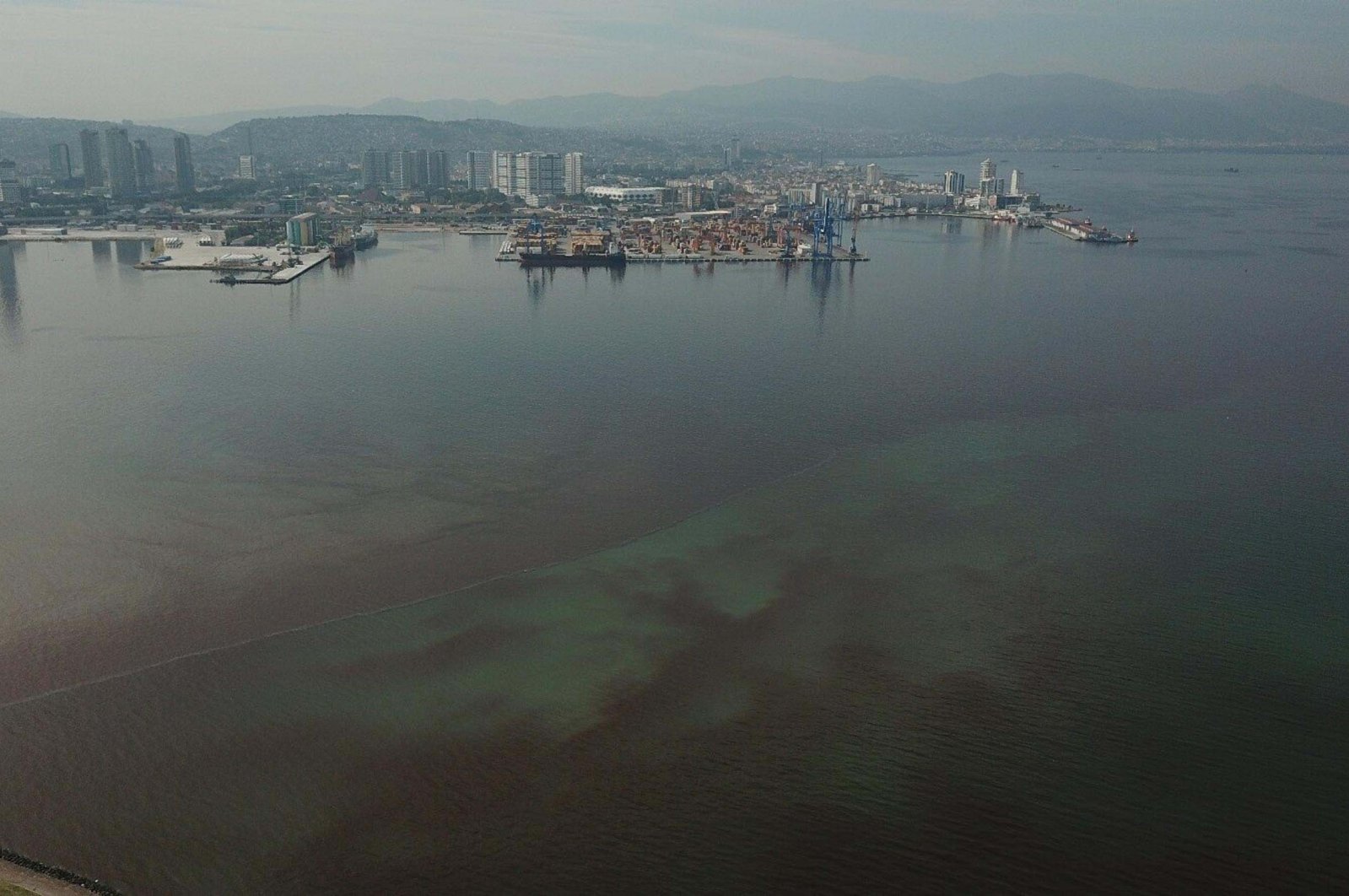
Researchers from Dokuz Eylul University reported alarming water quality data, indicating elevated temperatures and salinity levels in Izmir's Inner Bay that threaten the marine ecosystem
The Izmir Bay Scientific Committee for the Aegean coast of western Türkiye has released a 15-point urgent and short-term action plan designed to combat mass fish deaths and ongoing pollution in the region. Presented by Ege University Rector Necdet Budak, the plan focuses on immediate steps to protect the ecosystem and restore balance to the heavily polluted bay.
The document outlines actions to be undertaken by the Izmir Metropolitan Municipality and various ministries to address both land-based and marine pollution sources.
Budak emphasized that one of the key priorities is the improved operation of the Çiğli Wastewater Treatment Plant in accordance with legal and technical regulations. He announced the necessity of activating the Continuous Wastewater Monitoring Systems (SAIS) and transforming the bypass line into a flood weir. Further, all phases of this project are to be overseen by the İzmir Metropolitan Municipality.
"The second priority is accelerating advanced cleaning work in the streams flowing into the Inner Bay, which will also be carried out by the municipality," Budak explained.
Continuing, the third measure focuses on controlling all connections made to wastewater and rainwater lines across the bay, this task will be the responsibility of the municipality, while all land-based and ship-based discharges will be jointly managed by the Ministry of Environment, Urbanization and Climate Change, as well as the coast guard and port authorities.
The fourth priority highlights the importance of maintenance and repair work on the bay's main interceptors, sewers and pumping stations, all of which will be undertaken by the municipality.
The Izmir Water and Sewerage Administration (IZSU) will update the "Wastewater Discharge Regulations into Sewerage Systems" to include parameters such as carbon, nitrogen and phosphorus under the coordination of the Ministry of Environment.
To monitor the ongoing pollution in Izmir Bay, a cloud-based information-sharing system will be established by the ministry, as outlined in the sixth item. Moreover, the ministry will expand the monitoring network under the "Integrated Pollution Monitoring Program in Seas" to cover Izmir Bay, as outlined in the seventh measure.
Early warning systems
According to the action plan, an early warning system will be evaluated for Izmir Bay, using examples from the "Integrated Pollution Monitoring Program in Seas." Budak emphasized that this step, which forms the 10th point, will be vital to prevent further environmental damage.
He also addressed the dredging of seabed sludge, stating that the quality of water will be evaluated in areas where seabed materials are removed. These efforts will be conducted collaboratively by the Ministry of Environment, the Ministry of Transport and Izmir Metropolitan Municipality.
As the plan progresses, the 12th priority calls for the Ministry of Agriculture and Forestry to regulate marine life that can filter seawater, a strategy that could provide long-term benefits to the bay's ecosystem. The plan also involves enhancing research into Izmir Bay’s ecosystem to better understand the factors contributing to pollution, which will be led by the Ministry of Environment.
Furthermore, an essential measure to be implemented in the 14th item includes applying biological treatment methods that have proven successful in other parts of the world to enhance oxygen levels in the bay. These measures will be reviewed by the scientific committee under the coordination of the Ministry of Environment.
The final point in the action plan, the 15th, involves increasing public awareness through continuous educational programs conducted by public institutions, universities and NGOs to protect the bay's ecosystem.
While the action plan offers hope for Izmir Bay, the severity of the situation has been highlighted by scientists from Dokuz Eylül University’s Institute of Marine Sciences and Technology.
Researchers, investigating mass fish deaths and foul odors, collected samples from 11 locations across the bay. Their analysis revealed troubling data, including elevated temperatures and salinity levels in the Inner Bay that exceed normal thresholds.
The presence of high ammonium nitrogen further indicated untreated wastewater discharged into the bay, which poses a serious threat to the marine environment.
According to scientists, the ecological status of Izmir’s Inner Bay is classified as "bad," and the marine ecosystem is under threat. Without immediate intervention, the situation could worsen.
Using the Koca Piri Reis Research Vessel, scientists conducted fieldwork from Aug. 28 to Sept. 9 in Izmir Bay, specifically from Balçova Inciraltı to Bostanlı.
Led by professor Nil Kula Değirmenci, the team examined fish mortality causes and identified algal blooms as a major factor. Phytoplankton counts exceeded critical levels, with some areas recording up to 10 million cells per liter.
The report highlighted concerning physical and chemical properties of the bay, including surface temperatures between 27 and 27.6 degrees Celsius (81 and 81.7 degrees Fahrenheit) and elevated salinity levels.
Turbidity ranged from 0.5 to 3.5 meters, and chlorophyll-a concentrations were 50 times higher than normal for summer. Sediment samples revealed high organic matter levels, primarily fine-grained sediments, with visual algal blooms present along coastal regions.
Scientists also analyzed oxygen saturation across 13 stations, finding ammonium nitrogen levels 12 times above regulatory limits, indicating significant stress from untreated wastewater.
